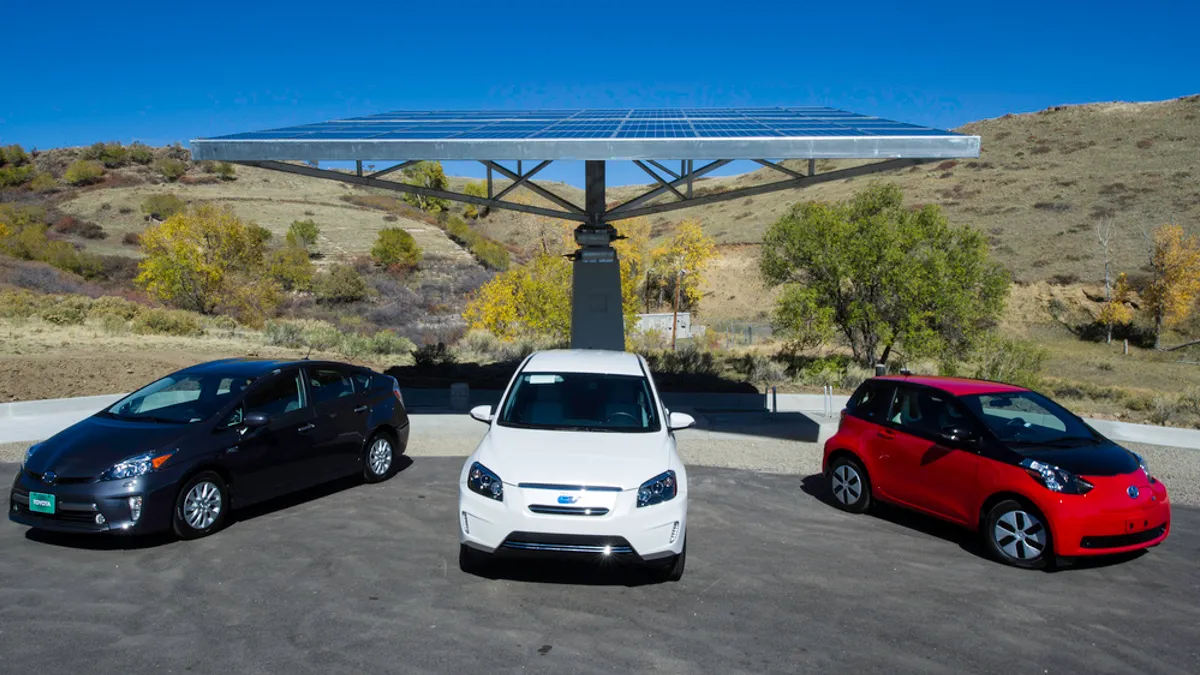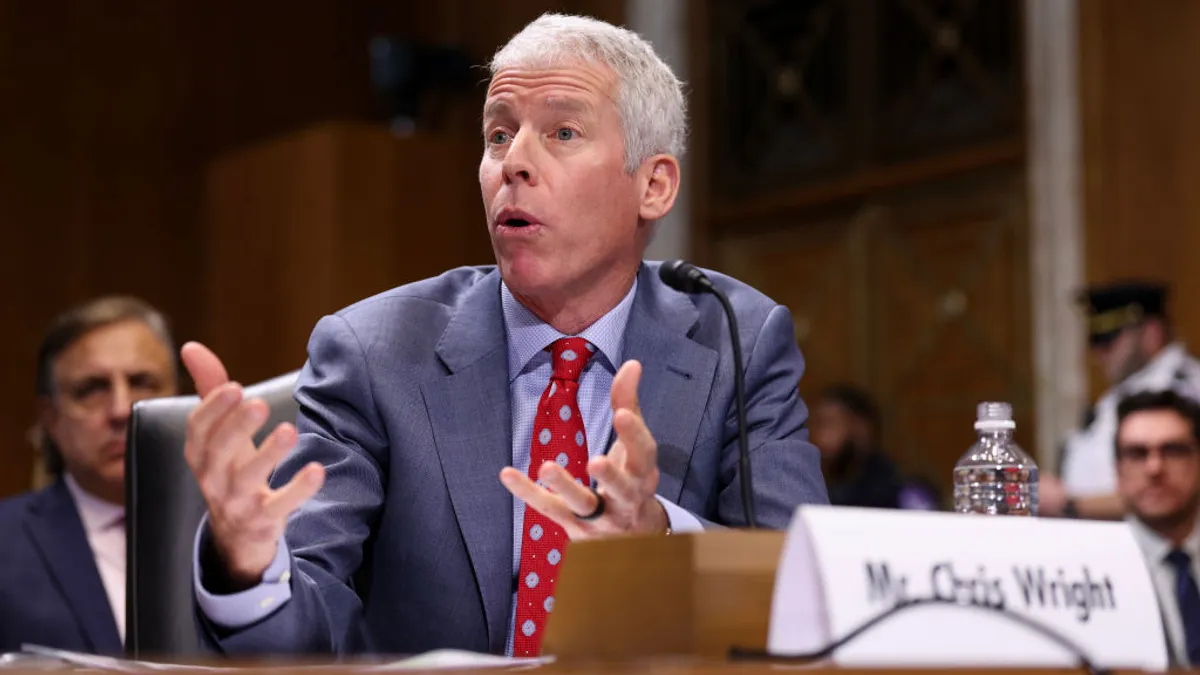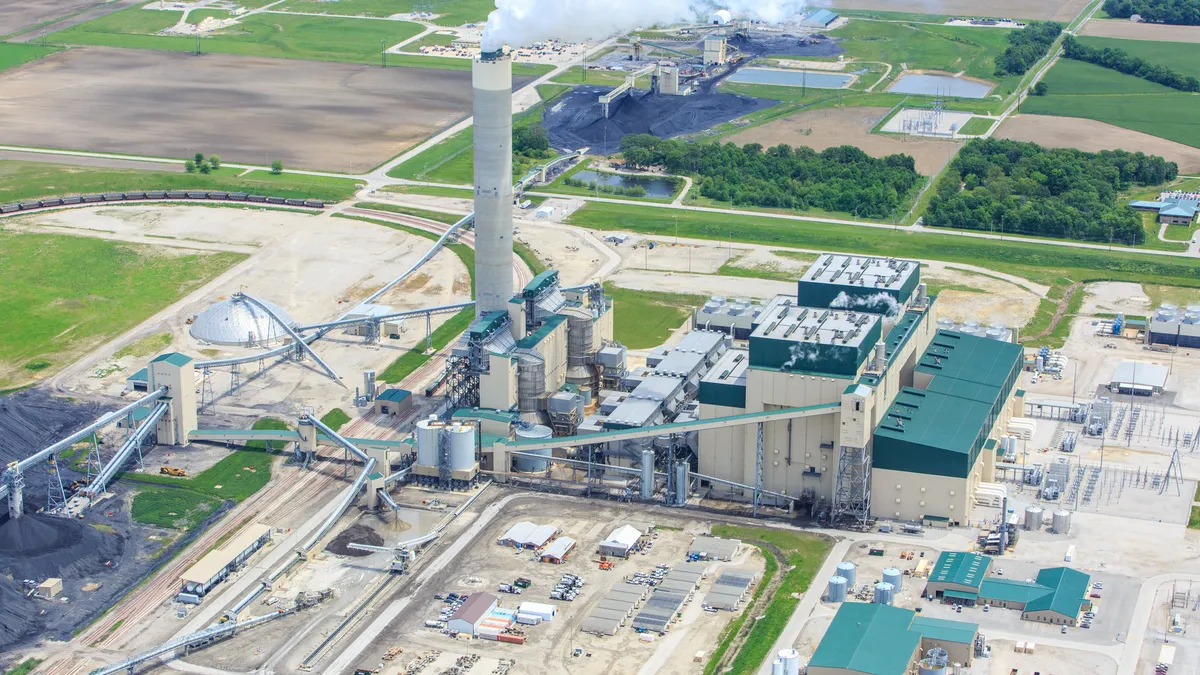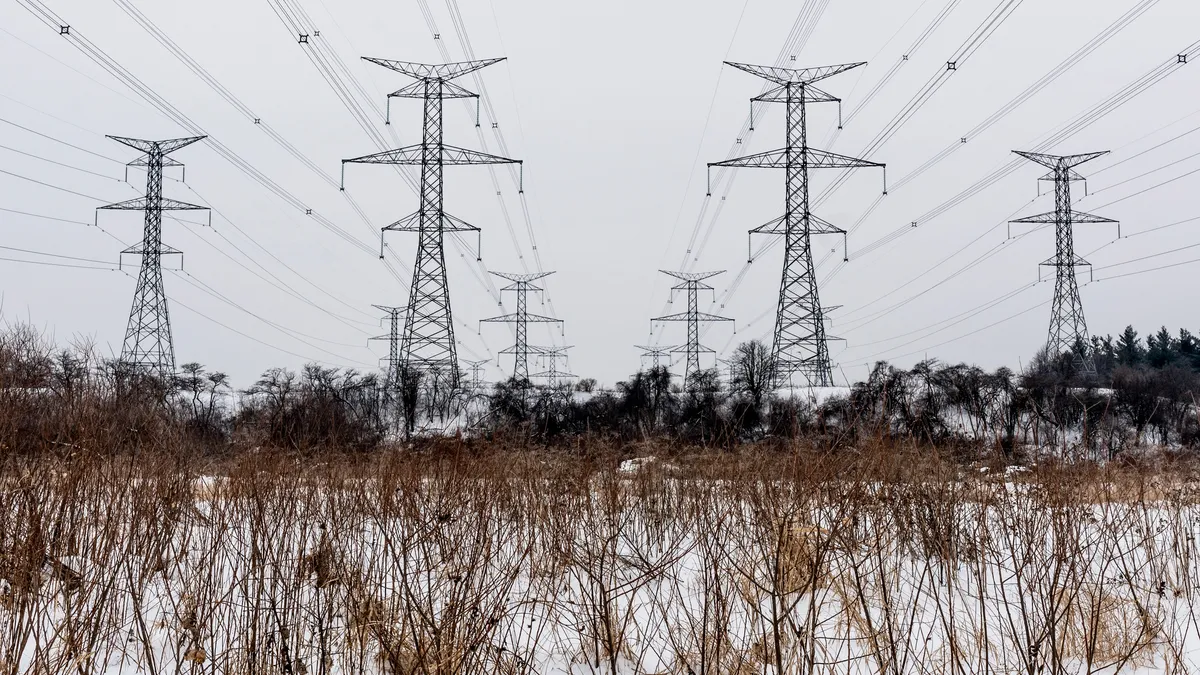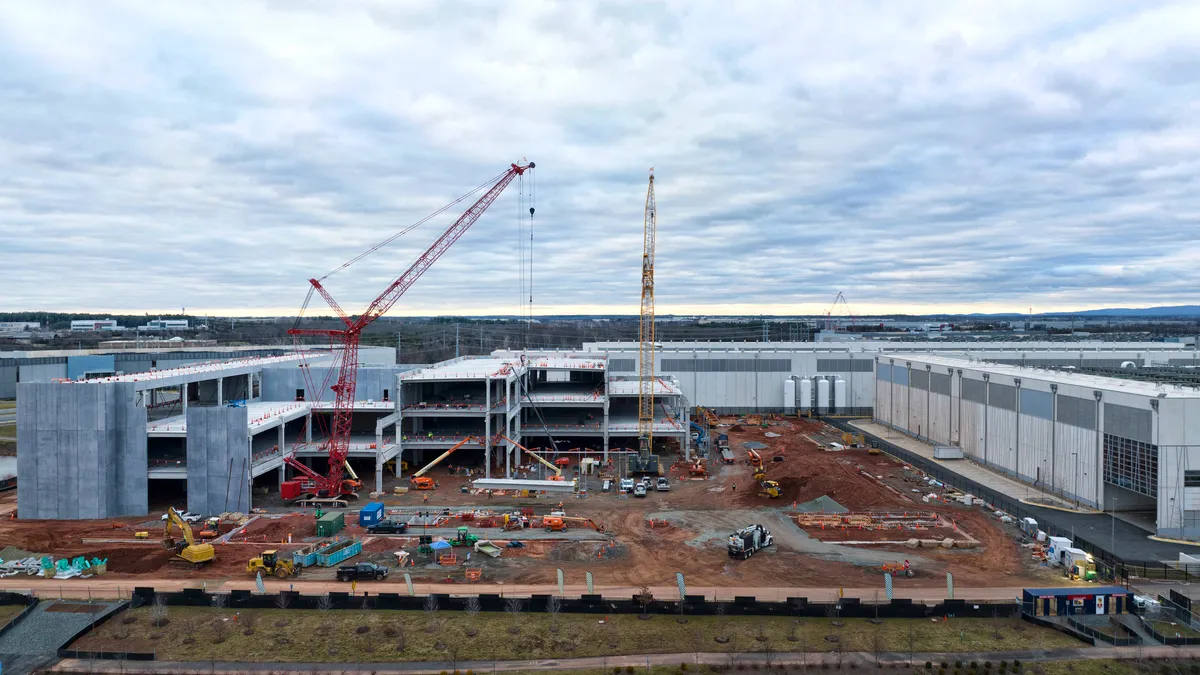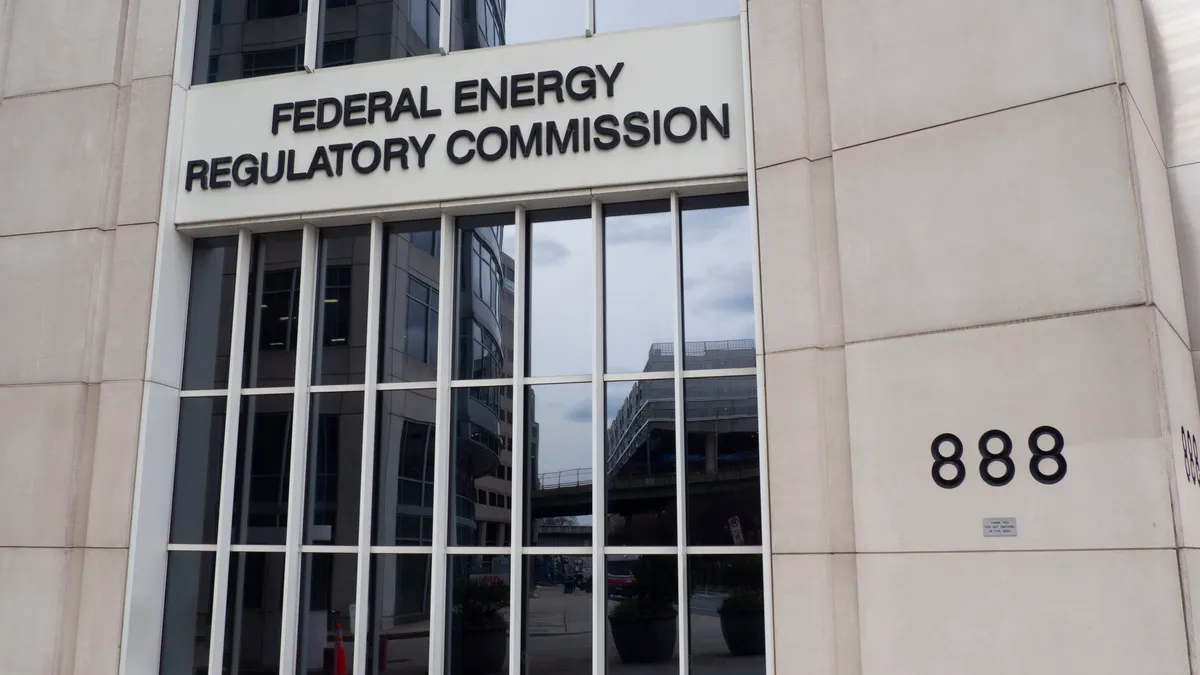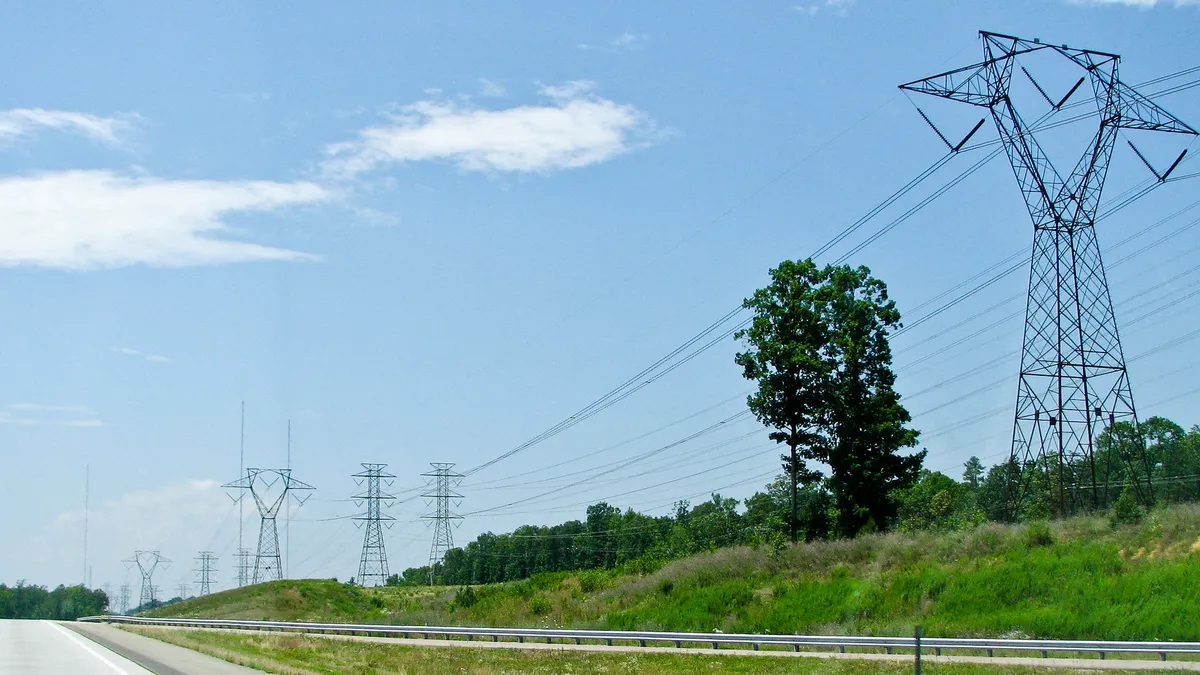It’s a compelling question: Do utilities need rate design to shift electric vehicle charging times?
For many investor-owned utilities, the answer is an easy yes. If states — and some utilities — want to meet goals to put more electric vehicles on the road, proactive rate design planning is necessary to harness the flexibility of charging stations for grid services and target when customers charge the vehicles to avoid overloading the grid during peak demand. This is the thesis of a recent report released by the Rocky Mountain Institute.
"There's a nuance in the design of the rate that regulators need to be thinking about," Chris Nelder, a manager with RMI’s electricity practice, told Utility Dive at the time.
Electric vehicles contain the potential for demand response programs and grow demand — an issue for utilities facing flat demand growth. But crafting the correct rate design is a sore spot for many utilities and customers, provoking heated arguments.
That raises the possibility of another approach: target marketing and consumer engagement to impel consumers to shift their charge times to off-peak periods without resorting to demand charges or time-of-use rates.
Bill Bottiggi, general manager of Braintree Electric Light Department (BELD), the municipal utility for Braintree, Massachusetts, found success with that approach, he told the crowd at the Peak Load Management Alliance’s 36th Conference in Cambridge, Massachusetts.
“It’s real important that we work with our residents who own us and get them not to charge on peak,” Bottiggi told the crowd. “And so far, we’ve been pretty successful at that.”
Behind Braintree’s brainy plan
Braintree, Massachusetts is part of the Boston Greater Area, boasting a population of about 35,000. The median income for households is $87,000, putting residents in the middle-class tier.
BELD serves roughly 14,000 customers, including residential and business. Its power mix is mostly made up of natural gas and nuclear, procuring energy from wholesale markets. There are much fewer renewables on its system, with wind making up 4.7% and solar coming in at 0.4%.
Despite the low amounts of intermittent resources on the system, BELD, like many utilities, is preparing for an inevitable boom in electric vehicles and clean energy resources.Massachusetts plans to put 300,000 electric vehicles on the road by 2025 — currently there are about 6,200.
But unlike many utilities planning for the boom, the muni sees rate design for electric vehicles as a last resort. Until now, the debate has concentrated on two rate design options: demand charges and time-of-use as a way to reduce peak demand.
The first approach charges customers for their highest electrical usage at a given point of time — typically monthly. Usually, this particular rate design is levied on commercial and industrial customers. Utilities, like Southern California Edison for example, say EV charging during off-peak periods can reduce demand charges.
Time-of-use rates are another option and have proven popular among residential customers. These rates are highest during peak demand and gradually decline. These are preferred by many consumer advocates and residents for more precisely aligning pricing signals with peak demand.
BELD chose neither. Instead, the muni provides a flat credit of $8 per month on customer bills for charging during off-peak times (between 9 p.m. and 5 a.m.).
“Right now, most residential customers, they don’t pay a demand charge,” Bottiggi said. “It’s something we could look at if we needed to strong-arm them to getting them to charge off-peak.”
The program seeks to have 200 EVs participate, and Bottigigi says they are adding four to six cars per month, with 40 EVs currently participating.
Using a marketing approach
“The key part is that we’re really driving this from a marketing approach,” said Pasi Miettinen, CEO of Sagewell, a smart analytics firm assisting BELD with its EV program. A smaller — and therefore more intimate — customer base and advanced smart meters helped BELD’s nimble response to electric vehicles.
“Braintree has a full deployment of [advanced smart meters] so we see when customers are charging their cars and work with them to get the charge off-peak,” Bottiggi said. The utility collect data every 15 minutes that helps them signal to the customers when to charge.
“One of the interesting insights that came out of this exercise, we actually found the behavior shift quite significant and reliable,” Miettinen added.
While bigger utilities might not have the flexibility to copy BELD’s electric vehicle program, it does invite a new way of connecting with consumers. It all boils down to information, Bottigigi said, and how consumers interact with it.
“Right now the residents are very cooperative with [BELD] to charge off-peak. As long as they are aware — that’s part of the marketing approach to make them aware,” Bottigigi said.
This touches upon a trend of utilities seeking better avenues to engage with consumers as they prepare for a clean energy economy. Knowing the customer, whether through data collection or a tight-knit relationship in the community a utility serves, could pave a new way of compelling customers to shift load instead of stakeholders resorting to familiar arguments about rate design.
This article has been updated to correct the median income figure for Braintree Mass. and the related income class.


